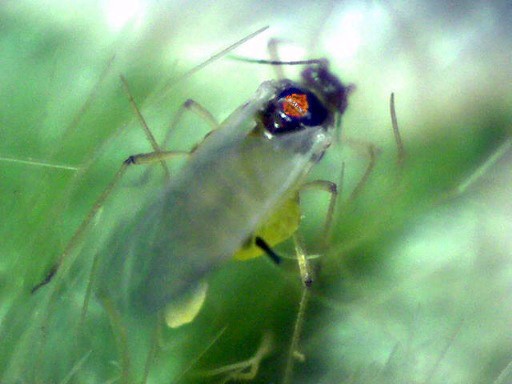8/5/2022 | Volume 25 issue 15
This newsletter and the advice herein are free. You usually get what you pay for.
Greetings,
Crop weather
Rainfall, air and soil temperatures, degree-days, soil moistures, and other current and historical weather data for the University of Minnesota Southwest Research and Outreach Center (SWROC), a little spot about two miles west of Lamberton, MN, can be found at SWROC Weather.
As of 8/01, the SWROC was at 1674 GDD and 6.79 inches of precipitation since May 1. This compares to historical averages of 1577 GDD and 11.33 inches of precipitation.
Most corn is at R2 (blister) with some at R3 (milk). The next weeks are important as seed fill occurs.
Soybeans range from R2 to R4. Flowering has been good, but pod development has been slower than typical in many fields. The R4 through R6 stages are most crucial for seed yield and any moisture, nutrient, defoliation, and other stresses will have the greatest negative impact on yields.
An interesting wind event late on 8/2 caused some damage at the Farmfest site and Jackpot Junction area.
There has been a delay in reporting August 1 soil moistures, but I will send the link when they are available. Soil moisture is a concern for some, including the SWROC area. Moisture stress and yield effects in areas with coarse-textured soils. Hoping for some rain this weekend.
Corn
The Corn rootworm issues in Bt-RW fields are predominately western corn rootworm and long-term corn. While root injury from corn rootworms is winding down, adults continue to emerge. As silks dry, beetles may move to later silking fields. Pollen shedding weeds may aggregate beetles within areas of corn fields. Northern corn rootworms may leave corn fields to feed on pollen from weeds and other plants; returning to corn to lay eggs.
Root injury in research plots seems slightly lower than we observed in 2021. Dry soils may be limiting lodging in some areas. Subjectively, it appears that rootworm problems may have spread to more fields. We will know more once the results from sticky trap cooperators come in.
The SWROC blacklight trap continues to capture low numbers of western bean cutworm moths this week. While numbers are low (high of 9/night), moths have not been this numerous here since the early 2000s.
Watch grasshopper populations. Large nymphs and adult differential, red-legged, and migratory grasshoppers are present. Earlier, the small, young grasshopper nymphs did consume much plant biomass and were easy to ignore. Large populations of large hoppers moving from ditches, roadsides, and other production areas into a field can rapidly defoliate plants. Corey Sinn sent a picture of poor pollination caused by defoliation and clipped silks he found in a field near the IA border. Another dry spring in 2023 and things will get interesting.
In dry SW MN, foliar leaf diseases in corn are hard to find and tar spot has not yet been reported.
Soybeans
Here too, watch fields with large grasshopper populations on the field edge. Combine any defoliation from grasshoppers with that of flea beetles, caterpillars, and other defoliators as you make treatment decisions. As pod fill begins watch for pod feeding and clipping.
Red-legged and differential grasshoppers will lay eggs in no-till soybeans. Ignore the noisy, large, brown grasshoppers with black and yellow hind wings. The Carolina grasshopper is rarely a crop pest and prefers open areas with sparse vegetation such as roadsides.
Soybean aphid populations continue to increase in some fields but have stalled in many fields where soil moisture is limiting, or vegetative growth has slowed. While some fields are now at or approaching threshold levels, many fields, have few aphids.
Scouting takes more time now as soybean canopies close, and aphids move lower in the canopy in R4 and R5 stages. Narrow row beans are especially difficult to scout well. Be sure to look at the leaves and pods lower on the plant when evaluating aphid populations.

Some of you may not want to run a ground rig through tall, canopied beans but do not be in hurry to treat soybean aphid populations less than the 250/plant threshold. As the vegetative growth at the top of the plant slows and stops during the late R4 stage, many aphids may leave and move to new fields. Over on the eastern front “Deep throat” reports observing this on shorter season beans. Significant moisture stress will also encourage aphids to leave a field.
Unlike early in the season, late-planted (and full-season) beans will be preferentially colonized now. This migration occurs every year about this time. 2022 may be unique because of a mosaic of planting dates and the somewhat slowed pod set in some areas.
Symptoms of twospotted spider mite injury are starting to appear in some, but not all, drought-stressed soybeans. The goal of spider mite management is to manage defoliation. Defoliation is not reversible, and spider mite injury often occurs during the mid and late reproductive stages when new leaves are no longer being produced.
The hog-peanut leaf miner may be more common than previously thought. For a description and pictures of the moth, the larva and injury it produces, and what to do if you find plants with symptoms, see the crop news article keep an eye out for hog-peanut leaf miner. Pioneer and Centrol agronomists have recently found and reported infestations (Thank you!). The potential yield impact from infestations of this insect is not known.
What to do with leftover chlorpyrifos?
Spraying it onto food or feed crops is not an option. For information on disposal see the Crop news article written by Nawaraj Acharya (MDA):
chlorpyrifos is no longer available for food and field crop: regulation and disposal
Pest Management field day - Save the date
Pest management field day. Wednesday, August 31. 8:30 – 12:30 AM at the UM SWROC.
As always, I appreciate hearing what you are seeing out there.
Happy trails,
Bruce
